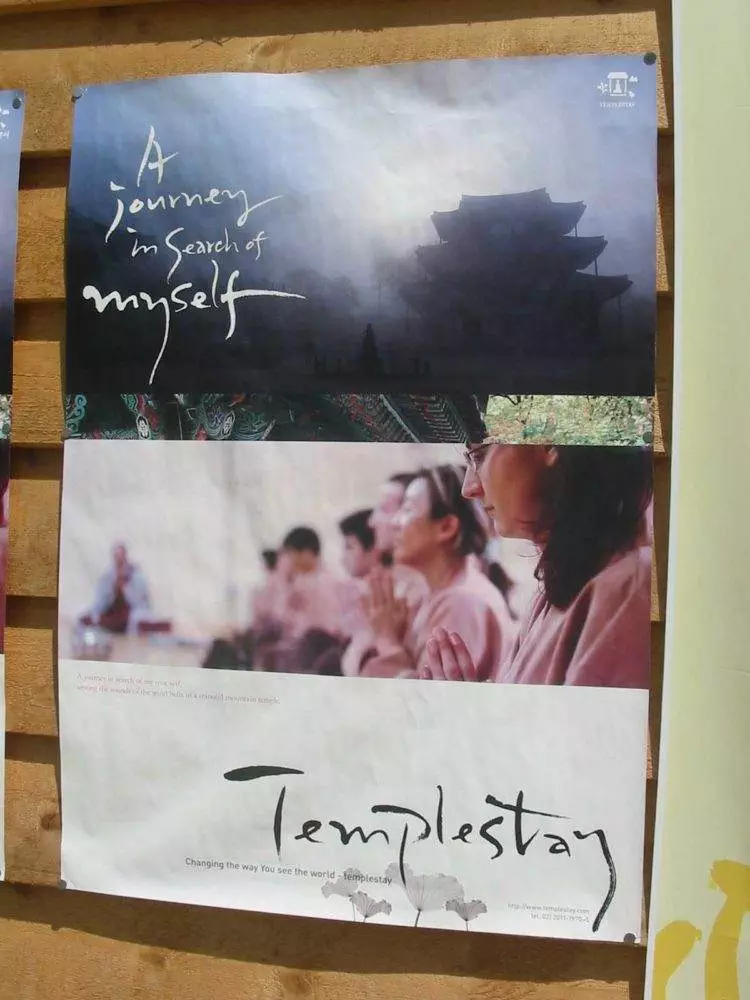
I owe many thanks to Minji for helping with setting up the destination this week and driving us out there. Thanks, Minji!
In all my life, I never thought I would ever get to see how Buddhist monks lived up close and personal. It seemed too foreign, too exotic, as though a mere non-Buddhist mortal like me could ever hope to understand what they know. It turns out that the monks I stayed with – despite their solemn vows – are actually pretty down to earth. They were quick to point out that attending a templestay does not make you Buddhist, does not teach you everything, and is merely a way to see how they live and conduct themselves.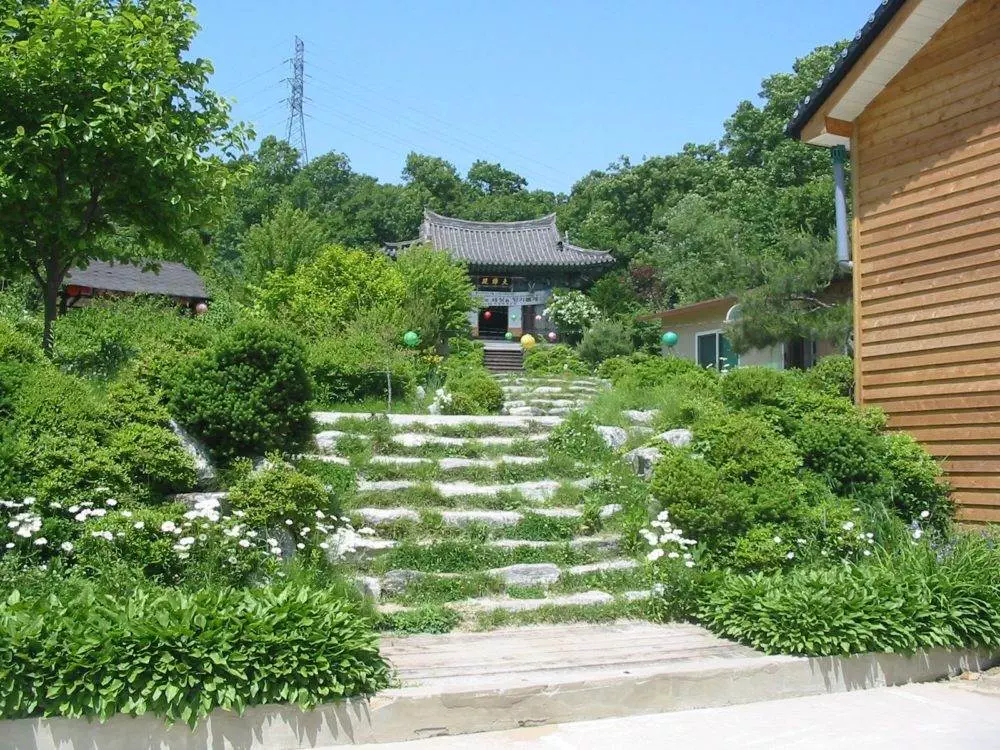
The ‘standard’ templestay program starts on a Saturday afternoon around 2pm, although my friend and I arrived a bit earlier. We were welcomed by one of the monks, and soon received our training clothes: a gray t-shirt, gray vest, and baggy elastic gray pants. As you might guess, they’re not designed to be form-fitting. The bagginess assists in performing some of the bows and prostrations (more on this later). 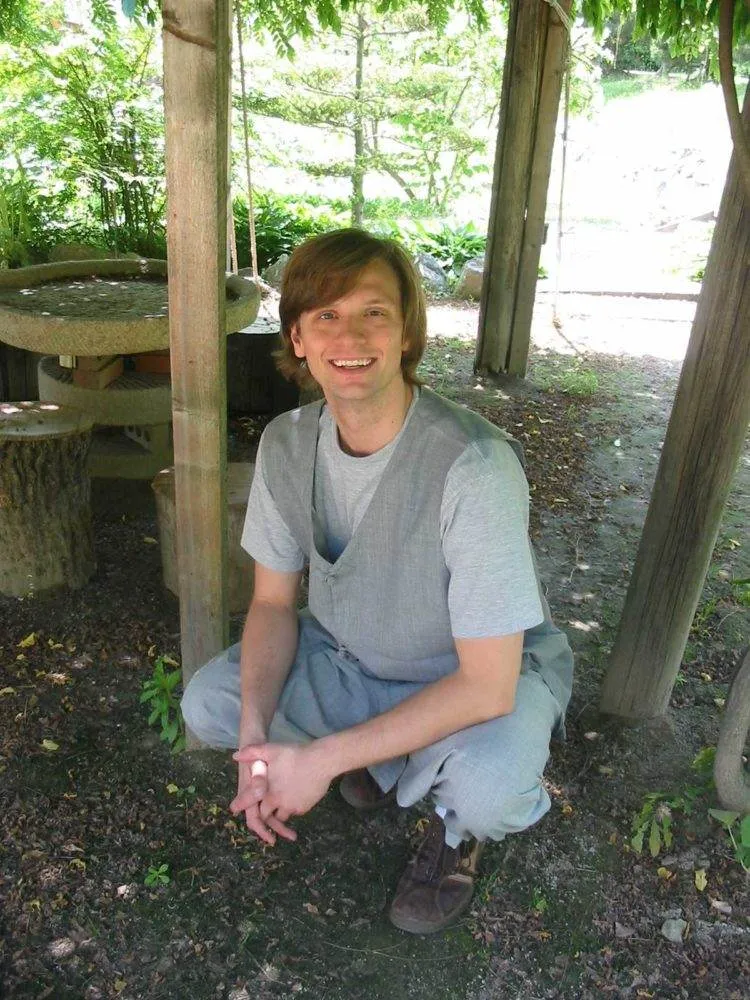 Don’t I look handsome? OK, maybe the color gray isn’t the most flattering color in the world…
Don’t I look handsome? OK, maybe the color gray isn’t the most flattering color in the world…
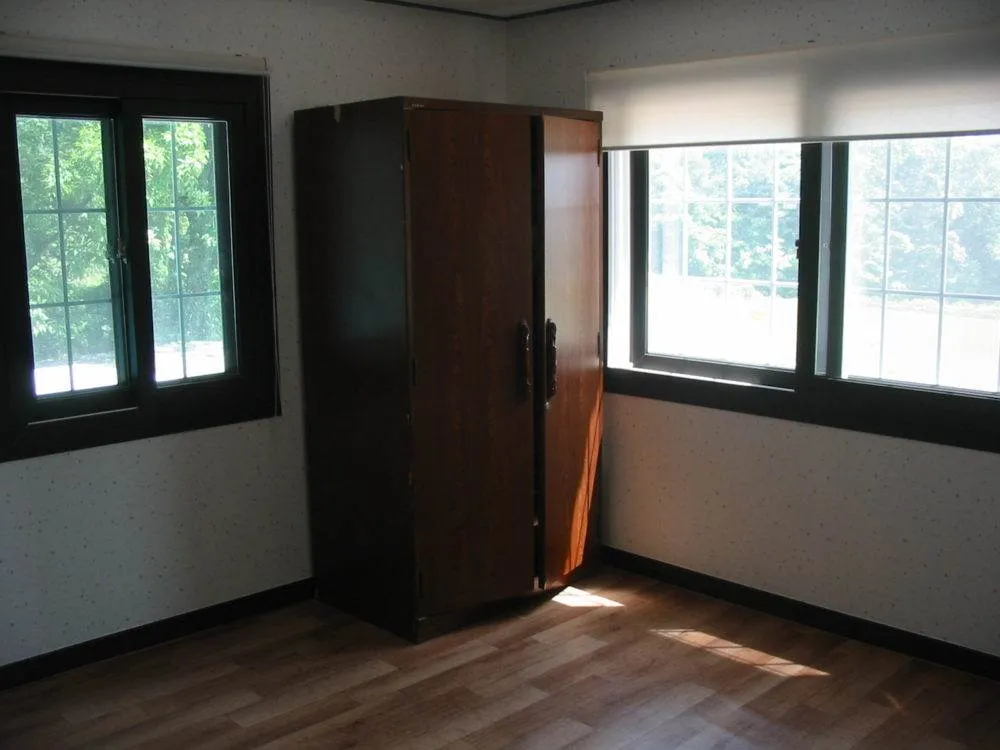 After changing, one of the monks began showing us around the building we were staying in. With several sleeping rooms (the armoire held pads and blankets), a modern Korean-style bathroom attached to each room, and a larger common area, it was actually nicer than I expected. If going on a templestay yourself, recognize that the facilities and specific programs / event vary by location. In other words, what you see above won’t necessarily be what you get.
After changing, one of the monks began showing us around the building we were staying in. With several sleeping rooms (the armoire held pads and blankets), a modern Korean-style bathroom attached to each room, and a larger common area, it was actually nicer than I expected. If going on a templestay yourself, recognize that the facilities and specific programs / event vary by location. In other words, what you see above won’t necessarily be what you get.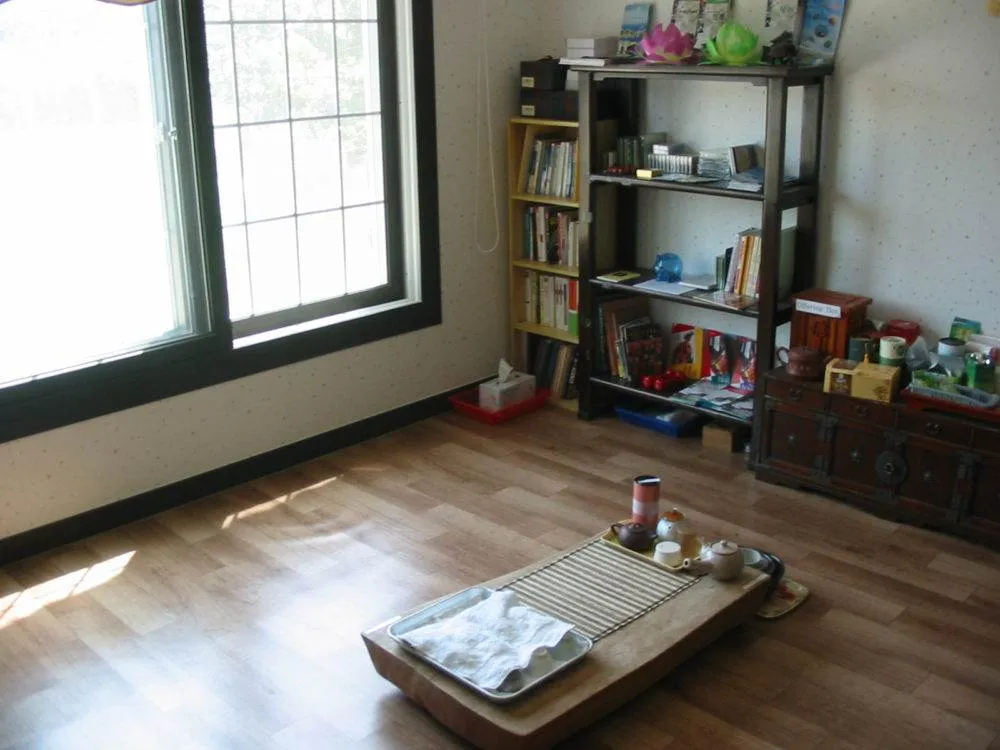
We soon relaxed in the common area, complete with a library of Buddhist books (mostly Korean but some English as well) as well as coffee and tea. The monk was able to speak both Korean and English, and although he didn’t ask many questions, conversation was relatively easily until other templestayers arrived. A second monk later joined us – a Russian monk who spoke both English and Korean. Both monks were down-to-earth, and were happy to show us the resources they had to offer – both in terms of books to read while there or books to take home for a donation. There were 10 of us total (myself included) – only two Americans, while the rest were Koreans.
Templestay programs vary by location, both in what you’ll experience and how much it costs. This particular templestay was written about in a New York Times article, by the way.
The first unofficial item on the schedule was some free time to walk around the center’s grounds. You might imagine a Meditation Center being a rather dry or dull place, and it’s this perception I feel the need to correct. Take a look at the pictures below to see what I mean:
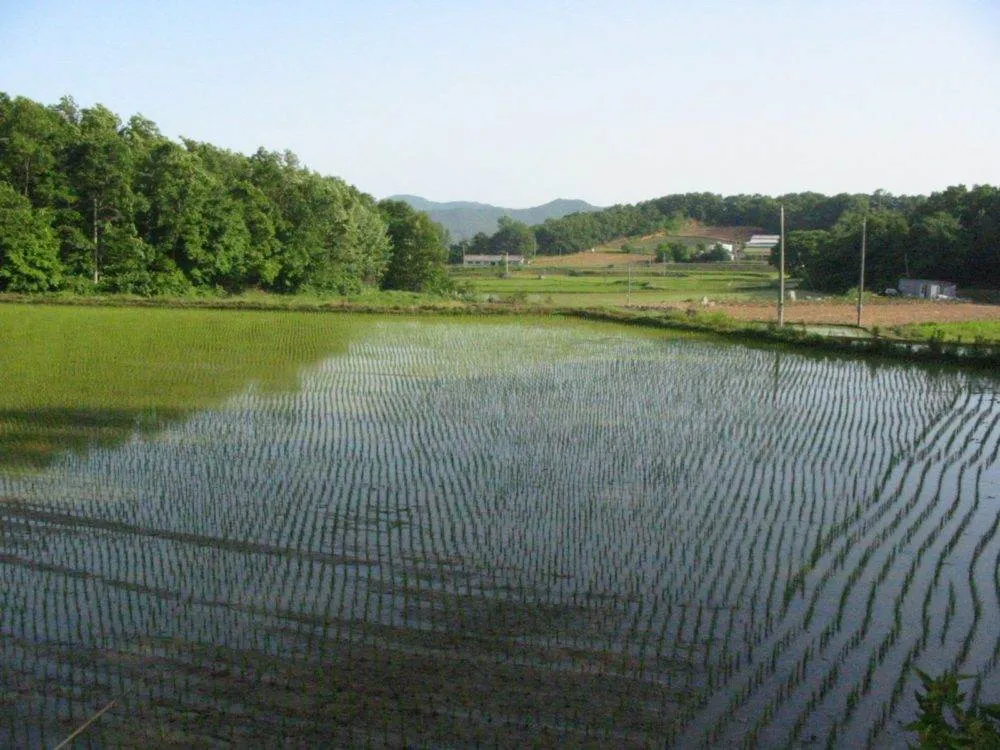
A rice paddy field – each little green thing sticking out of the water was one rice plant.
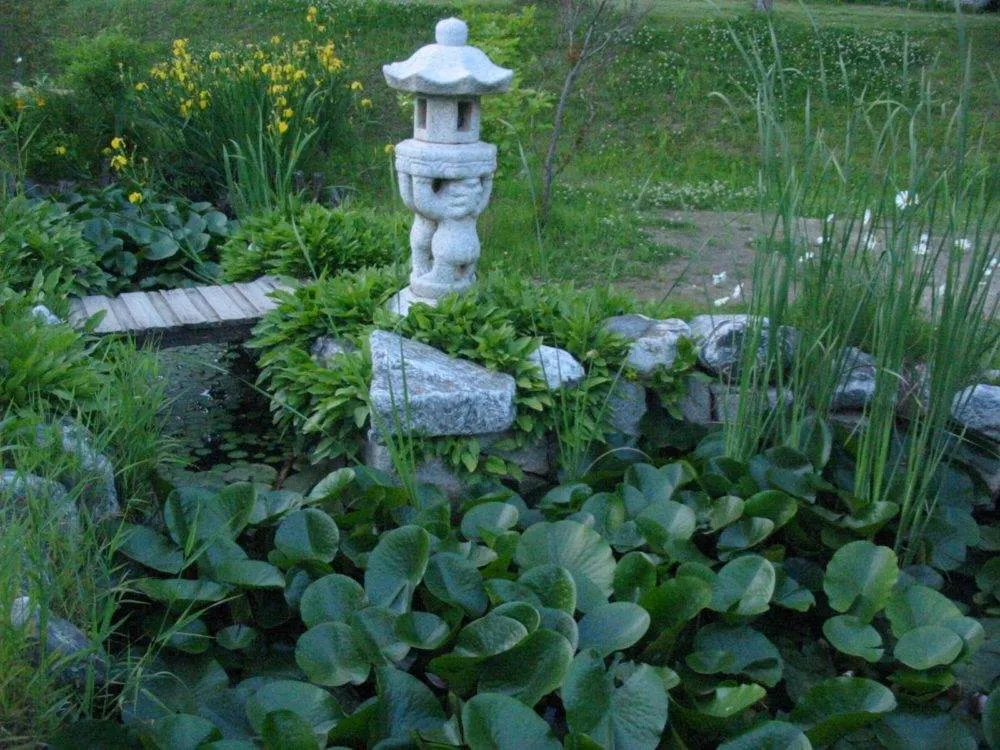
After some time exploring the grounds and meeting some of the other participants, we watched a promotional DVD on being on a templestay – which explains why there was a modern TV and DVD in the common area. Lots of wide, sweeping, beautiful pictures of templestay programs – kind of like any promotional tourism you’ve ever seen in your life. Still an interesting watch however.
Later, we were shown to one of the Buddhist temples, where we were given some basic instruction on how to bow / prostrate. It’s important to mention that the reason for bowing or prostrating is not to worship the Buddha – it’s done as a way of lowering / humbling yourself. Start by standing up straight, palms together, focusing on the Buddha(s) in front of you. Slowly, lower yourself to kneel on the pad in front of you, then bring your chest to your knees, being careful not to let your backside stick up or out. Lower your forehead to the mat and turn your palms up. After a moment (ideally in sync with the others), push yourself to a kneeling position, curl your toes under, and rise slowly and gracefully. This form of prostration is traditionally done three times when one first enters a temple.
I was actually surprised to learn how difficult this form of prostrating was – I danced in college for years (and still do on occasion these days), and am otherwise in pretty good shape. Of course the monks made it look easy, as though watching a figure skater glide effortlessly on the ice. The templestay participants? Not as graceful or effortless, but we tried!
Next on the monk’s strict schedule was dinner, which we were summoned to by the moktok (a bell-shaped wooden percussion instrument). We were told to be silent during the meal, and to take only what we would eat to avoid wasting anything. The food was surprisingly good – rice and several kinds of well-prepared vegetables:
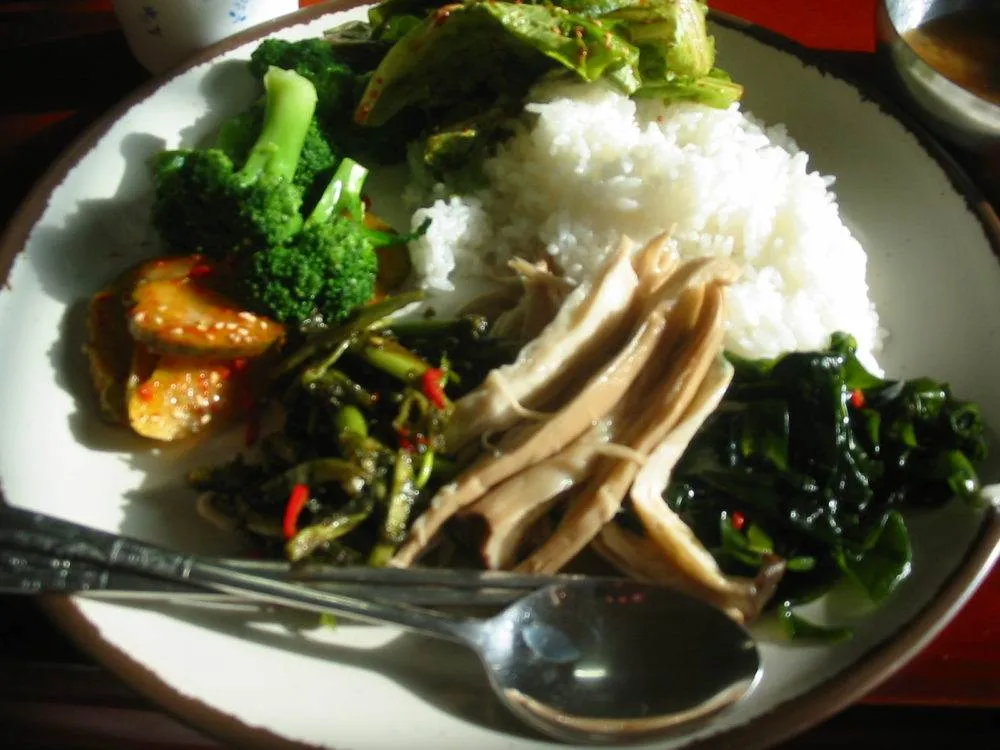
After dinner, several of the templestayers enjoyed some tea, outside in one of the picnic-like shelters. This is the life, it’s easy to think. A few minutes later, we were summoned back to reality by a bell indicating it was time for chanting. We made our way to the meditation hall we practiced in earlier, performed our opening prostrations, and watched as the four monks filed in – as solemn as you would expect Buddhist monks to be. While we weren’t expected to keep up with their chanting, we were expected to be more than just observers. We did out best to follow along, but it was almost impossible to get into the same rhythm as the monks. The chanting was beautiful – melodic, rhythmic, and almost musical without using any form of notation. The moktok was used as a metronome of sorts to keep everyone on pace, and incense filled the room. For obvious reasons I have no pictures (I was kind of busy at the time!), but I trust the mental image can be formed.
We later followed a monk to another building for meditation – not something I’m very familiar with, but more often than not trying something new doesn’t require familiarity. We were seated on larger square cushions and given some instruction on breathing, our posture, and otherwise clearing our mind for about half an hour. The typical meditation session for monks lasted 50 minutes, but ours would be only 20 minutes since we were beginners. Meditation ended up being very relaxing – once you drop your preconceptions. There’s nobody saying ‘om’ or leading the group. Controlling / concentrating on your breathing is a way of getting into a meditative state, not trying to find nirvana (which isn’t done in one 20-minute session anyway) The tips on posture the monk gave us were more about being comfortable, and you don’t have to hold your hands in some precise way. There was no real ‘goal’ for meditation, except to clear your mind and focus on your breathing, posture, and concentration.
It was almost 8pm after meditation, and we were released back to our guesthouse, where the schedule indicated it was near bedtime. Near bedtime?! At 8pm? When your wakeup call comes at 2:45AM (not a typo), you get to bed a bit earlier. We rolled out some foam pads and blankets kept in each room, found some pillows and started for bed.
Traditionally, four kinds of instruments are used in the wake-up call for four different groups of beings (remember that Buddhists believe in a rebirthing, not reincarnation)
- The dharma drum is used for waking all animals great or small.
- The metal fish is for waking all fish.
- A cloud-shaped gong is for waking the beings of the sky.
- The brahma bell is for waking the beings of hell.
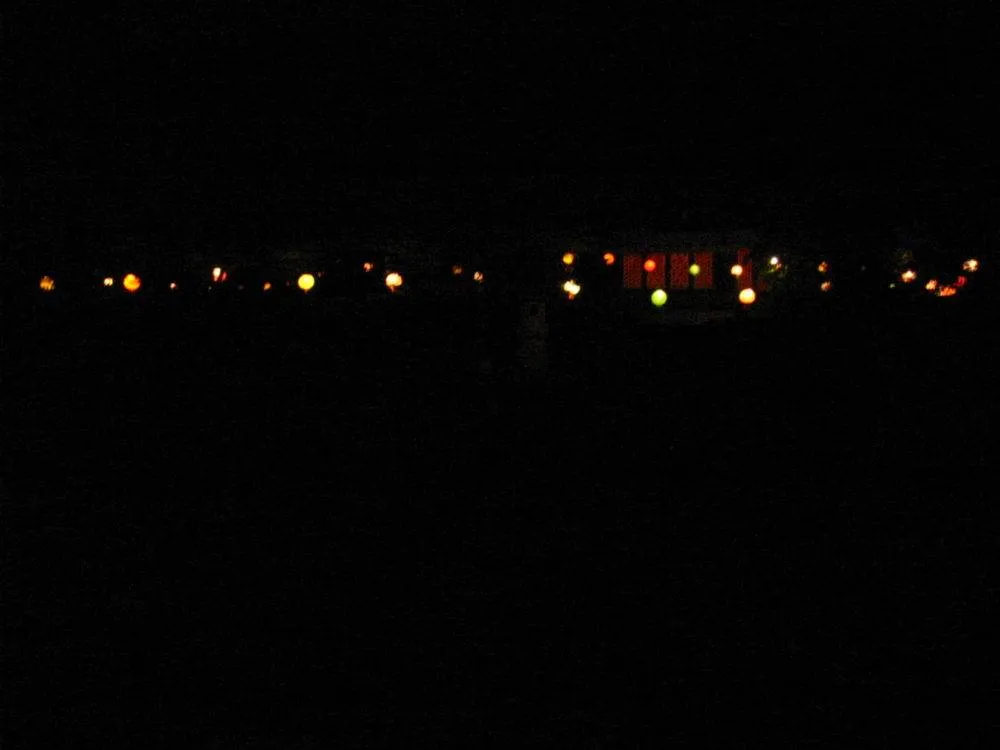
2:45 am comes pretty early, even when you’re expecting it. After the four instruments mentioned above were sounded, a moktok summoned us to the meditation hall. The first thing you do after rising at 2:45am? Chanting and prostrations. Yesterday was just a warm-up, it seemed – this particular cermony was a series of 108 prostrations, with an accompanying chant for each one. The monks seemingly had them memorized – an amazing feat since the English text stretched for at least 10 pages. While most of the chants were one line long, some near the beginning or end of the series were multiple lines or even paragraphs long. I quickly lost my count and place, but managed to follow the monk’s as best I could. It’s hard to maintain your balance, concentration, and read chants in a different language all at the same time!
The templestayers survived, and we soon walked to another building that appeared to be where the monks lived. We sat in a circle around the common room while the monk prepared tea. In mostly Korean, he explained the way to drink tea – not just to slurp it down and ask for another cup, but to savor it. Use each one of your senses to enjoy the tea. Taste the sweet, salty, and bitter parts of the tea… Um, yeah – the Korean traditional tea the monk served didn’t taste much different than the hot water it started out as… While drinking tea, the monk asked us where we were from, and noted how unusual it was to have only two foreigners in a group of ten. Usually the foreigners usually make up the majority of templestayers, at least at this particular place.
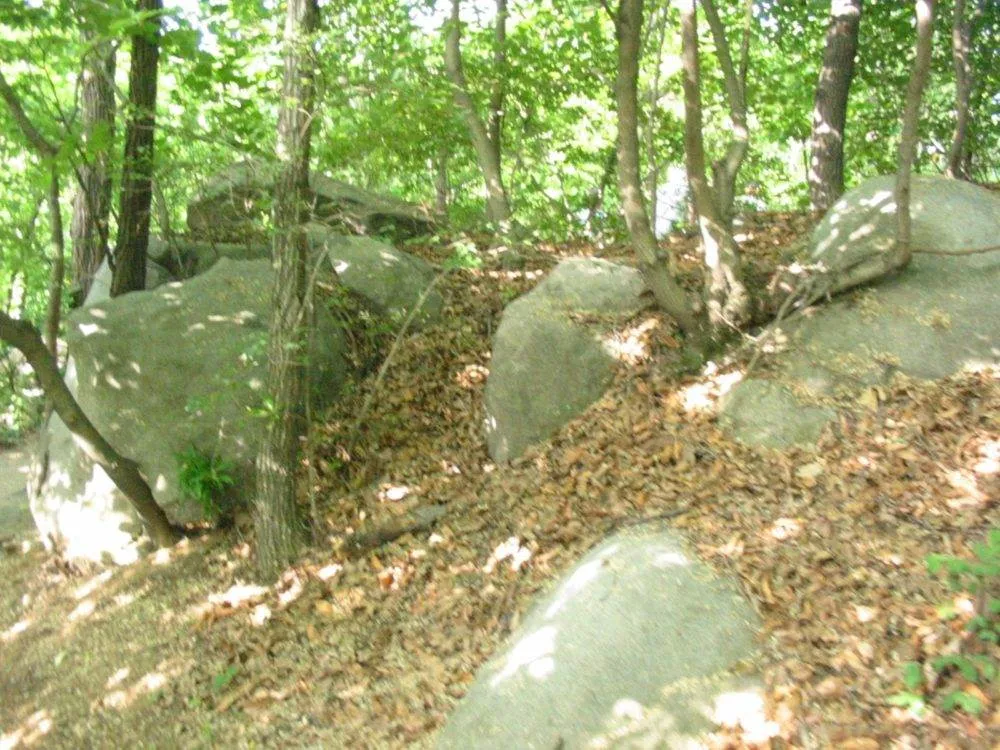
Next came some free time, and later breakfast – very similar to the lunch and dinner we had already enjoyed. The highlight of the day was a hiking trip planned to Mt. Mani. Alright, hiking, I’ve done this many times back in the States, I thought. We being ambling up the mountain, and quickly learned this isn’t your momma’s hiking trail. Very narrow trails, steep dropoffs without much room for error, and hardly a clear path. You had to truly focus on what you were doing to make progress. Eventually, you learned to look just far enough ahead at the next rock to step on, the next tree to swing from, and that led to a near-meditative state for yours truly. 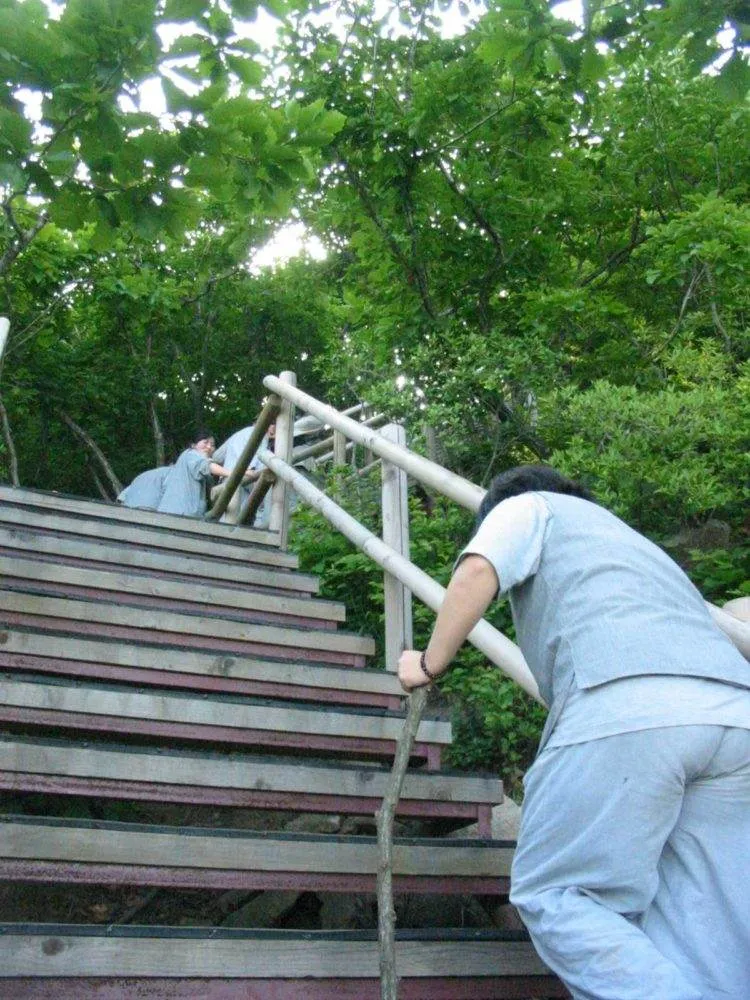
We climbed a grueling series of 351 steps up the steepest part of the mountain (I know – I counted each. and. every. one. of. them.), made it over countless rocks or around trees. Then, we started down a different path – not any more difficult, but certainly not any easier. If you’ve done any mountain climbing, you know it’s almost harder controlling your descent – especially with the aforementioned dangers. A few kilometers later, we reached one of the summits:

After making our way back to the meditation center, we had one chanting / prostrating session left – this one a good bit shorter than the one at 4am. Since the chanting had no English translation, I tried to mimic the syllables and observe the surroundings. Sorry no pictures, but look back to Jogyesa temple during Buddha’s birthday for an idea.
We enjoyed our last meal with the monks – an excellent lunch with the same rice and vegetables as before – then had the opportunity to try our hand at calligraphy. This shouldn’t be too hard – I’m an artsy person with decent hands, I thought. 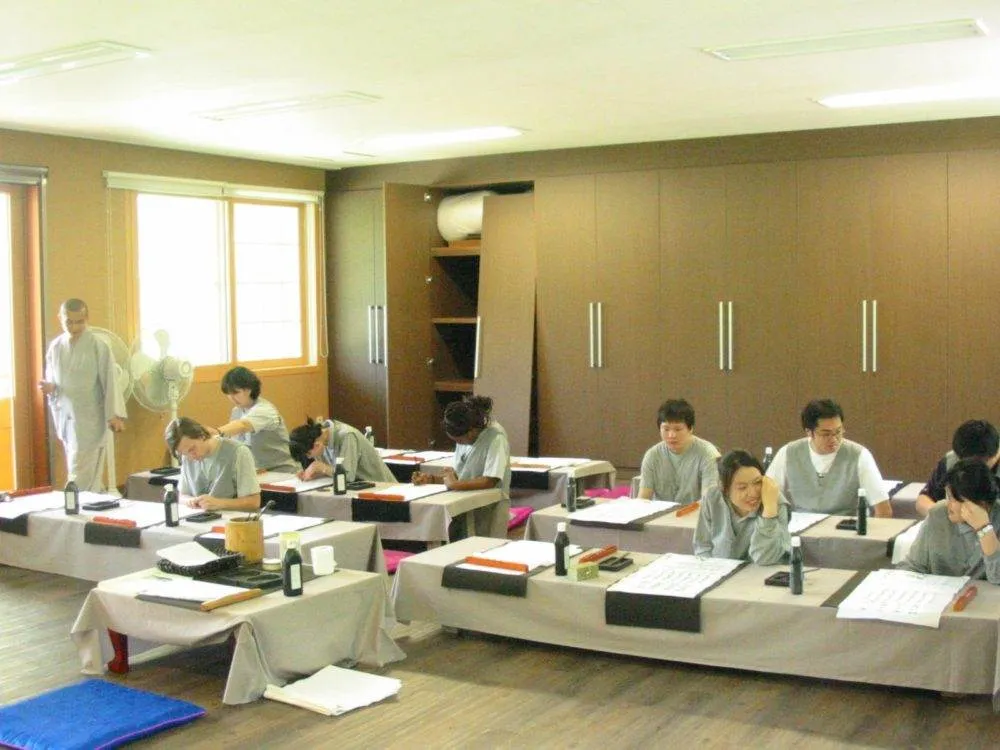 Yeah – it’s a lot more difficult than I thought. Take your calligraphy brush (like a shaped paintbrush, NOT a calligraphy pen like those used in the states), dip it lightly in an ink well, then setup your piece of tracing paper over the template. Trace over a brief message in Chinese, Korean, and English, then trace over a picture at the bottom of the paper. It wasn’t easy – but was certainly an interesting experience nonetheless…It’s at this point that we’re beginning to see the end of this unique experience, and we made our way back to our rooms and changed out of our training clothes back into street clothes.
Yeah – it’s a lot more difficult than I thought. Take your calligraphy brush (like a shaped paintbrush, NOT a calligraphy pen like those used in the states), dip it lightly in an ink well, then setup your piece of tracing paper over the template. Trace over a brief message in Chinese, Korean, and English, then trace over a picture at the bottom of the paper. It wasn’t easy – but was certainly an interesting experience nonetheless…It’s at this point that we’re beginning to see the end of this unique experience, and we made our way back to our rooms and changed out of our training clothes back into street clothes.
After thanking the monks, we found our way out and eventually home.Looking back, I was glad I got to see the ‘how’ of a monk’s life; I only wish I knew the ‘why’ better. Having a good general knowledge of the Buddhist traditions / beliefs will also help the templestayer – I almost wished there had been a required reading or a pre-templestay type of class available.
I’m not about to become Buddhist (I’m not sure I could ever stop eating meat for any length of time), but I have a new respect for those that choose this belief as their own.



Templestay looks like a very calming place to relax and refocus. I don’t know about that “hike” though. The training clothes look very comfortable.